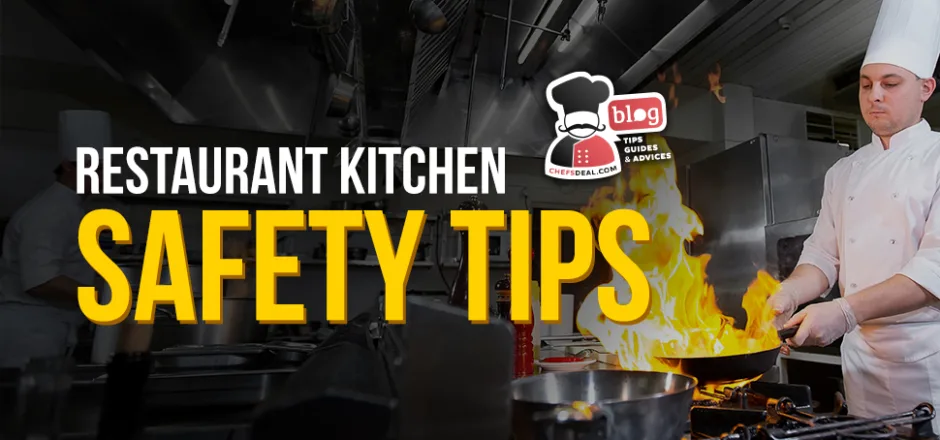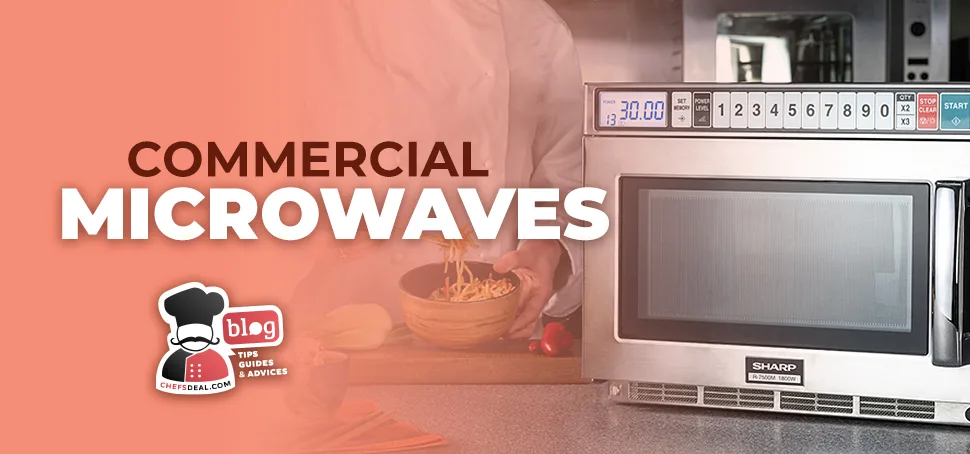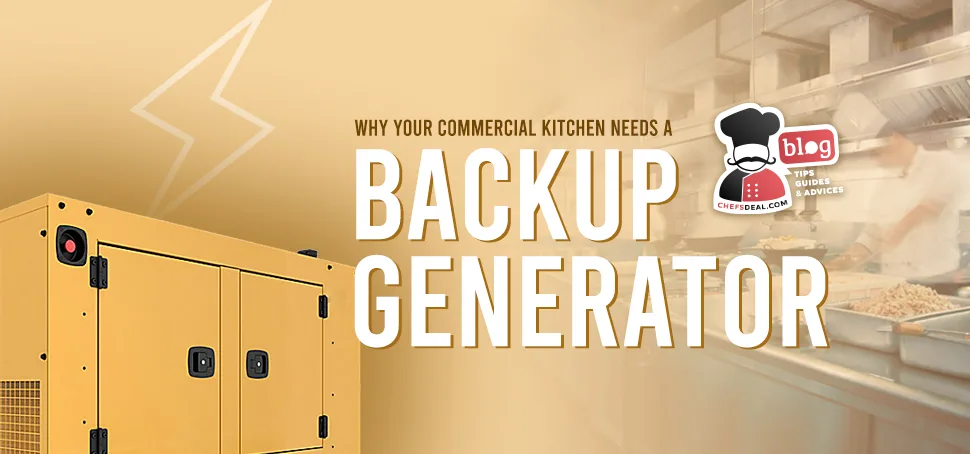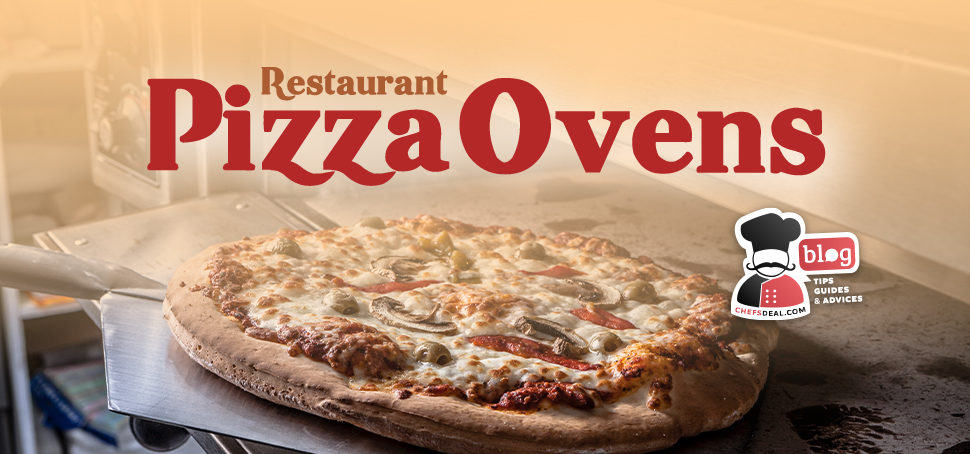Restaurant kitchen safety tips are essential to avoid health hazards and meet codes and regulations for public and employee safety. The food service sector is responsible for maintaining sanitary conditions in the kitchen to protect diners and staff from accidents and foodborne illnesses. You should implement special cleaning and safety protocols within your establishment to ensure that your staff is properly trained and everything is up to code while relevant institutions such as USDA, FDA in the US, and CFIA in Canada enforce safety and sanitary guidelines. We prepared a tip list to enhance your food service business’s work safety conditions.
9 Restaurant Kitchen Safety Tips to Create a Safe Work Environment
Restaurant kitchens can be dangerous settings if necessary measures aren’t taken. Many safety hazards, such as fires, are very likely to occur due to the nature of the business. However, these hazards and accidents are by no means unavoidable. They can be easily prevented when the right restaurant kitchen safety tips are followed. This section will delve into essential restaurant kitchen safety tips, offering guidance on minimizing risks, handling equipment properly, and fostering a safety culture that benefits everyone involved. By implementing these tips, restaurant owners and managers can comply with health and safety regulations and create a safer, more productive workplace for their teams.
1. Staff Training
Comprehensive staff training is fundamental to fostering a culture of safety in the kitchen. It ensures everyone is aware of potential hazards, knows how to use equipment correctly, and responds to emergencies.
There are several training programs and certifications for restaurant kitchen employees, such as Occupational Safety and Health Training (OSHA) provided by the US government to teach restaurant workers about workplace safety, ServSafe certification offered by the National Restaurant Association to teach how to handle food and alcohol service responsibly, and Hazard Analysis and Critical Control Points (HACCP) certification to train the workers to identify and prevent potential hazards.
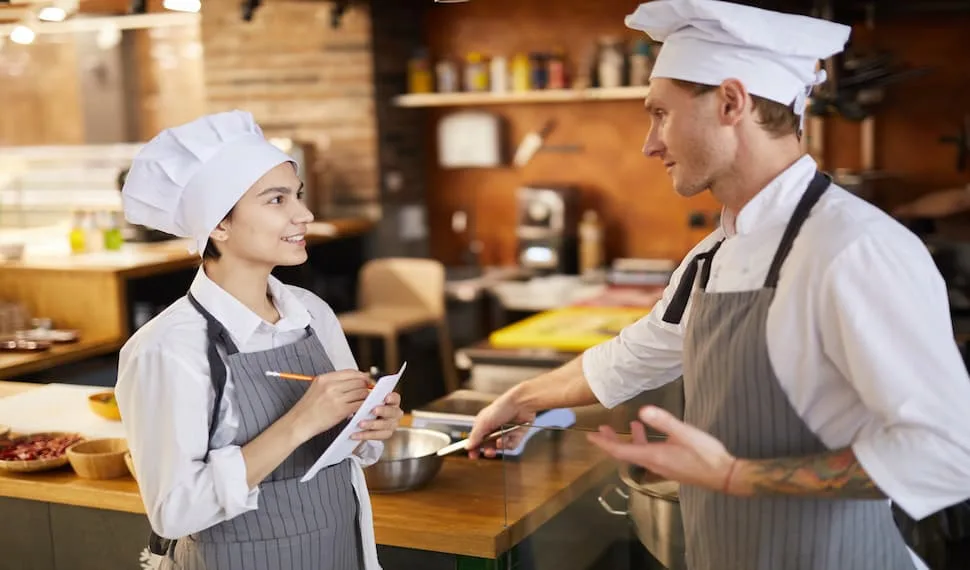
2. Protective Equipment (PPE)
The use of protective equipment is the easiest and most effective restaurant kitchen safety tip you can follow to prevent injuries and accidents. Invest in these 7 protective equipment pieces to equip your kitchen and staff with the necessary measures:
- Non-slip mats are used to avoid slippery floors. You can match these with non-slip shoes for your staff to maximize security.
- Cut-resistant gloves are resistant to slashes and piercing. You should invest in these for every staff member who uses knives frequently or operates machines like meat slicers.
- Hairnets will prevent hair from falling into the food.
- Oven mitts, pot holders, and heat-resistant mats are necessary to handle hot plates, pots, and utensils.
- Aprons and Appropriate Restaurant Kitchen Apparel are designed to protect the wearer from burns, heat, and spills with their fabrics, long sleeves, and coverage.
- Safety goggles are essential for chefs in the splash zone.
- Disposable gloves are necessary for every staff member. They can be vital in preventing cross-contamination and contamination in general.
3. Hygiene and Sanitation Protocols
All staff must wash their hands regularly and use ingredients only after being prepped properly. Different ingredients might call for different cleaning processes, so ensure your staff knows the nuances. Hygiene and sanitation protocols can include the following 6 points:
- Regular handwashing.
- Cleaning and wiping surfaces with safe disinfectants after each use.
- Properly and timely disposing of waste to avoid pests and health hazards.
- Separation of raw and uncooked foods.
- Create a separate allergen-free zone and keep the stations separate.
- Use of protective equipment and kitchen uniforms.
4. Periodical Restaurant Equipment Maintenance and Inspection
Commercial machinery can become dangerous if not maintained properly. For example, a malfunction of the meat grinder could lead to painful injuries to employees, or unchanged ventilation and water pipe filters can significantly reduce the quality of your water and air and lead to a chain reaction of problems. Clean each piece of equipment regularly and schedule for professional maintenance when necessary to keep your equipment in good condition. In addition to these restaurant kitchen safety tips, investing in the right kind of equipment in the first place can improve your work safety. Read our article about the role of commercial kitchen equipment in food safety to find out more!
5. Fire Suppression System
Most restaurant kitchen fires are caused by accumulated grease, and grease fires cannot be extinguished with sprinkler water. A fire suppression system kicks in when such a fire emerges and cuts off the gas to smother the fire. A ventilation system can also be equipped with nozzles within this framework to release fire suppressants.
6. Fire Extinguishers
Equipping your restaurant kitchen with adequate fire extinguishers is crucial for immediate response to potential fires. Staff should be trained in properly using these extinguishers, including identifying the correct type for different kinds of fires and ensuring quick and effective action during emergencies. Regular maintenance and inspections of these extinguishers are also essential to ensure they are always ready for use.
7. Fire Safety Training
Most local fire departments offer fire safety training to businesses. Fire safety training aims to teach the staff how to manage the fire extinguishers and fire suppression systems and what to do in case of an emergency. These trainings will include evacuation drills too. You should have pre-established emergency response plans to ensure all employees know their roles. Staging surprise mock drills every now and again can be a good way of reminding them of their training.
8. First Aid Training
First aid can be needed for burns, cuts, and similar minor injuries. Having several employees who can perform first aid will significantly enhance the safety conditions of your kitchen. Among all the restaurant kitchen safety tips, first aid might be the one you need the most since cuts are common injuries. Also, regular refreshers on first aid procedures help maintain a safe and prepared work environment.
9. Developing Safety Checklists and Conducting Regular Inspections
Create a safety checklist and monitor the state of your kitchen periodically to stay ahead of problems. Thanks to this measure, you will identify and resolve issues in their early stages and be prepared in case of a government inspection.
What are The Common Safety Hazards in Restaurants?
Burns, fires, slips, cuts, pests, and more are common safety hazards in restaurants. Identifying potential risks in advance will help you prepare for issues. According to a study by the U.S. Bureau of Labor Statistics conducted in 2019, the most common non-fatal injury among restaurant kitchen workers was cuts and lacerations at a rate of 23.6 cases per 10,000 full-time workers. Here are 7 common restaurant kitchen safety hazards and how to prevent them with basic restaurant kitchen safety tips.
- Burns can be caused by grease in uncleaned grills, hot pans, and pots or extreme burner flames. You should train your staff to correctly adjust the burner flame, encourage using oven mitts to handle hot utensils, and promptly remove leftover grease.
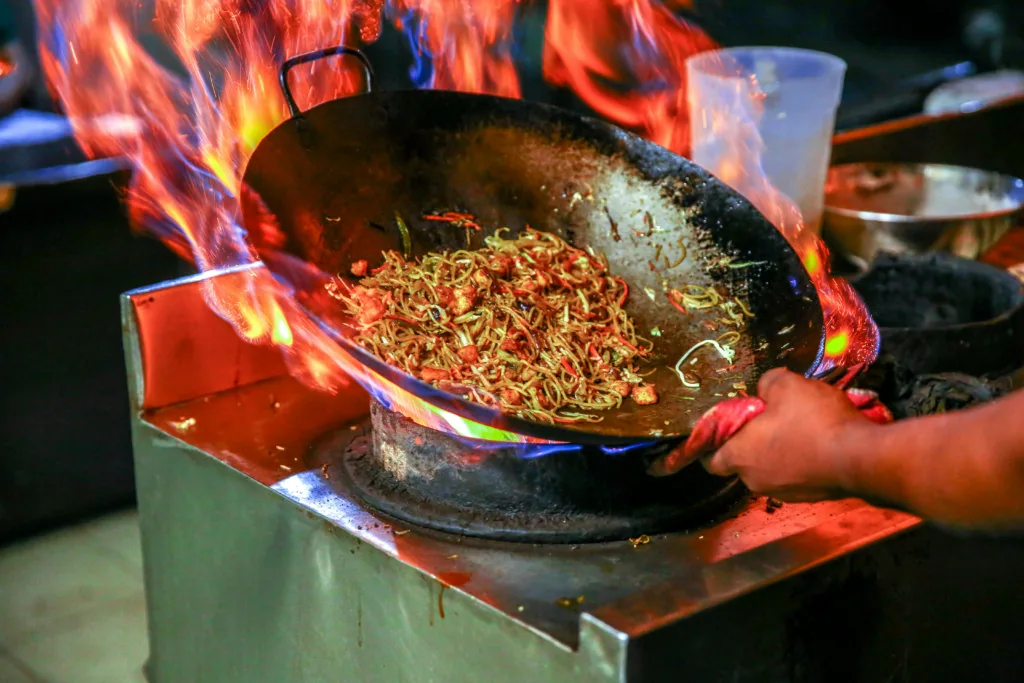
- Cuts and lacerations commonly occurred due to the prevalent use of knives and sharp objects. Ensure the use of a cutting board when chopping and keep the safety guards on the knives of meat processors and similar equipment when in disuse to lower the chances of accidents.
- Pests can be easily avoided and exterminated using correct pesticides and periodical clean-ups. You should stay on top of this task since an infestation will endanger the health of your staff and customers and lead to your business’s closure. Follow the FDA pest control regulations to safely deal with the situation and work with a licensed pest control company to get expert help.
- Failed ventilation violates regulations in most countries, creating a hostile work environment. Heat, grease, steam, and other particles can only be removed with proper ventilation, and unclean air can open the way to fire and health hazards and poorly impact the equipment’s longevity.
- Slips and trips can occur due to spilled liquids and slippery floors after cleaning. Close off freshly cleaned spaces to dry before you allow foot traffic again, and clean up any spilled products quickly.
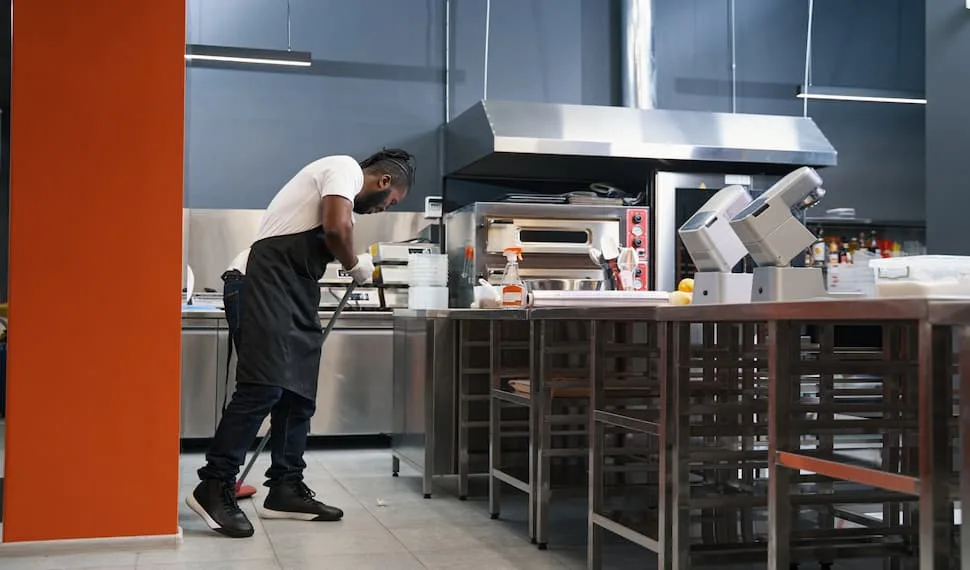
- Improper food storage and handling create cross-contamination and lead your products to go bad before their time. You should store and handle ingredients properly to avoid food-borne diseases, triggering allergies, and wasting your investments. Ensure that a protocol of labeling, first in, first out, and right temperature adjustments are followed at the storage stage. During the prep stage, separate the leftovers from fresh ingredients and create allergen-free stations to avoid cross-contamination.
Conclusion
In a bustling and people-oriented foodservice business, restaurant kitchen safety is a priority and a responsibility. With the potential risks of burns, cuts, slips, fires, and cross-contamination, upholding safety protocols is a commitment to your staff and customers’ well-being. By understanding the significant hazards prevalent in commercial kitchens, the risk of workplace injuries can be substantially reduced.
Adhering to restaurant kitchen safety tips such as proper staff training, use of protective equipment, hygiene protocols, regular equipment maintenance, and detailed fire safety measures significantly minimize risks. Instituting fire suppression systems, organizing fire safety training, and encouraging first aid knowledge among employees can be instrumental in averting potential disasters.
Integrating these restaurant kitchen safety tips into your daily operations demonstrates a commitment to excellence, fosters a safety culture, and sets an example for all. Remember, an investment in safety measures is an investment in the longevity and success of your restaurant!

